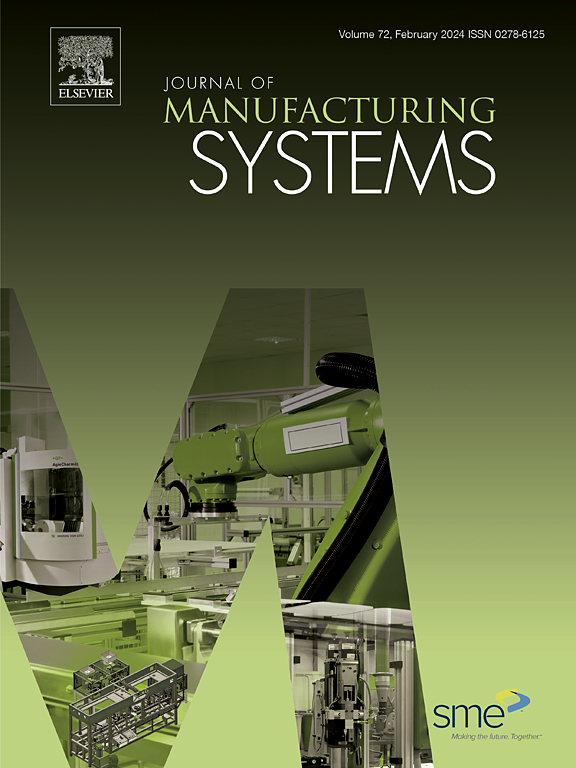A Digital Twin-based condition monitoring system to detect and resolve web slip at traction rollers in a web processing machine
IF 14.2
1区 工程技术
Q1 ENGINEERING, INDUSTRIAL
引用次数: 0
Abstract
Slippage of web material over rollers is an undesirable phenomenon in web processing applications, causing damage to the web material. This leads to compromised quality and increased waste. While web slippage is commonly observed at high web speeds due to air entrapment on freely rotating rollers, it also occurs at lower web speeds at the traction rollers, which are designed to drive the web through the machine. Installing web speed sensors to detect such web slippage on multiple traction rollers in large-scale web processing machines is expensive. This work presents a novel Digital Twin methodology for online condition monitoring and fault detection to identify web slip at the traction rollers. The Digital Twin uses the contact forces between the web and the traction roller to detect web slippage, greatly reducing the need for web speed sensors and thereby cutting costs and time. Additionally, in response to detected web slip, the newly proposed Digital Twin further acts to resolve the slip. Experimental results demonstrate the effectiveness of the Digital Twin in detecting and resolving web slippage on three different web materials.
一种基于数字孪生的状态监测系统,用于检测和解决卷筒纸处理机牵引辊的卷筒纸滑移
卷筒纸在辊筒上打滑是卷筒纸加工应用中不希望出现的现象,它会对卷筒纸造成损坏。这导致质量下降和浪费增加。由于自由旋转的卷筒上的空气夹持,在高卷筒速度下通常会观察到腹板滑移,但在较低的卷筒速度下,牵引辊也会发生滑移,牵引辊的设计是为了驱动卷筒通过机器。在大型卷筒纸加工机上安装卷筒纸速度传感器来检测卷筒纸滑移是昂贵的。这项工作提出了一种新的数字孪生方法,用于在线状态监测和故障检测,以识别牵引辊的腹板滑移。Digital Twin利用卷筒纸和牵引辊之间的接触力来检测卷筒纸滑移,大大减少了对卷筒纸速度传感器的需求,从而降低了成本和时间。此外,为了响应检测到的网页滑移,新提出的数字孪生进一步解决滑移。实验结果表明,该方法可以有效地检测和解决三种不同材料的卷材滑移问题。
本文章由计算机程序翻译,如有差异,请以英文原文为准。
求助全文
约1分钟内获得全文
求助全文
来源期刊

Journal of Manufacturing Systems
工程技术-工程:工业
CiteScore
23.30
自引率
13.20%
发文量
216
审稿时长
25 days
期刊介绍:
The Journal of Manufacturing Systems is dedicated to showcasing cutting-edge fundamental and applied research in manufacturing at the systems level. Encompassing products, equipment, people, information, control, and support functions, manufacturing systems play a pivotal role in the economical and competitive development, production, delivery, and total lifecycle of products, meeting market and societal needs.
With a commitment to publishing archival scholarly literature, the journal strives to advance the state of the art in manufacturing systems and foster innovation in crafting efficient, robust, and sustainable manufacturing systems. The focus extends from equipment-level considerations to the broader scope of the extended enterprise. The Journal welcomes research addressing challenges across various scales, including nano, micro, and macro-scale manufacturing, and spanning diverse sectors such as aerospace, automotive, energy, and medical device manufacturing.
 求助内容:
求助内容: 应助结果提醒方式:
应助结果提醒方式:


